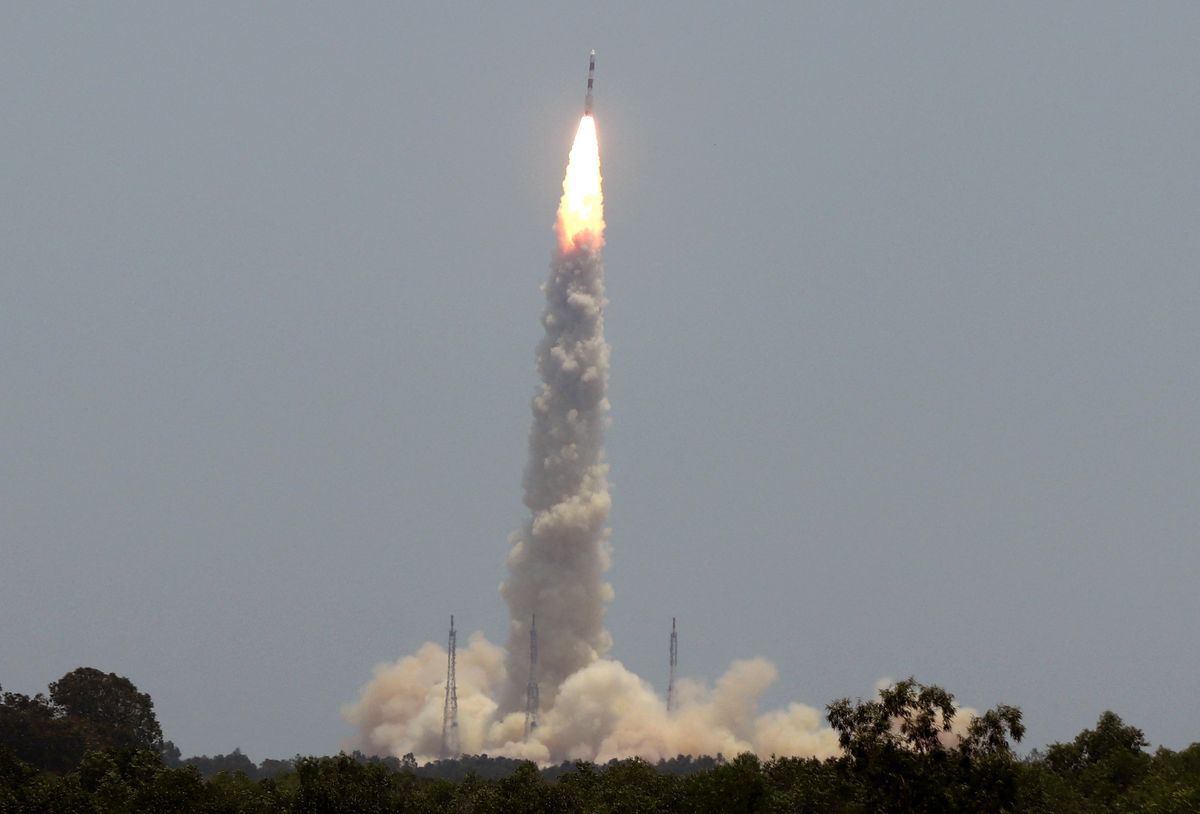India's Aditya-L1 mission launches to study sun's secrets
India launched its very first sun-studying spacecraft, Aditya-L1, over the weekend.

A few minutes every morning is all you need.
Stay up to date on the world's Headlines and Human Stories. It's fun, it's factual, it's fluff-free.
The backstory: The journey to explore the solar system has been a collaborative effort spanning decades and involving space agencies from around the world, and several missions are particularly interested in learning more about the sun. A better understanding of our sun is crucial for predicting space weather – those magnetic waves that traverse our solar system. Space weather can disrupt things here on Earth, from satellites to radio communications and even power grids, so keeping a close eye on it is important.
The Soviet Union launched the first artificial Earth satellite in 1957 and the first human in space in 1961. Space exploration expanded in the 1960s with NASA's Pioneer program, which marked early steps toward uncovering the mysteries of our solar system. Japan, Europe and China have also launched solar observatory missions into Earth's orbit. One noteworthy mission is NASA’s Parker Solar Probe, launched in 2018, aimed at decoding the solar wind from the sun. It gets closer to the sun's surface than any other spacecraft has been able to.
On another note, India, home to the world's largest population, achieved a milestone in 2014, reaching Mars orbit with its first interplanetary mission, the Mars Orbiter Mission. The country has plans for a crewed mission in Earth's orbit in late 2023 and early 2024.
More recently: Just last month, India's space agency, the Indian Space Research Organization (ISRO), successfully landed its spacecraft, Chandrayaan-3, on the moon’s surface. This made India the fourth nation globally and the second in the 21st century to achieve a safe moon landing.
The development: India launched its very first sun-studying spacecraft, Aditya-L1, over the weekend. The launch took place from Sriharikota, an island off the Bay of Bengal, on Saturday morning. Aditya-L1 is now on its way to a special position in orbit, approximately 1.5 million kilometers (932,000 miles) away from Earth.
Aditya-L1's destination is Lagrange Point 1 (L1), which is a unique location between the sun and Earth, where the gravitational forces of both celestial bodies cancel each other out. This location is like a parking spot for observing the sun's activities, and it saves fuel too.
The mission's main goals are to study the sun's upper atmosphere and various solar phenomena, like those big bursts of plasma called coronal mass ejections. Aditya-L1 is packing seven scientific instruments, with four of them focused directly on the sun, while the others study solar wind particles and magnetic fields around L1.
Key comments:
Our tireless scientific efforts will continue in order to develop better understanding of the Universe for the welfare of entire humanity," said Prime Minister Narendra Modi on X, formerly Twitter.
"Now it will continue on its journey – it's a very long journey of 135 days, let's wish it best of luck," said Indian Space Research Agency chief Sreedhara Panicker Somanath.
"India has a long tradition of looking at the sun from the ground...but there are limitations of looking at the sun from the ground because you can only see the lower atmosphere of the sun. So this was very, very important that we could go to the space," said Dipankar Banerjee, director of ARIES.




Comments ()